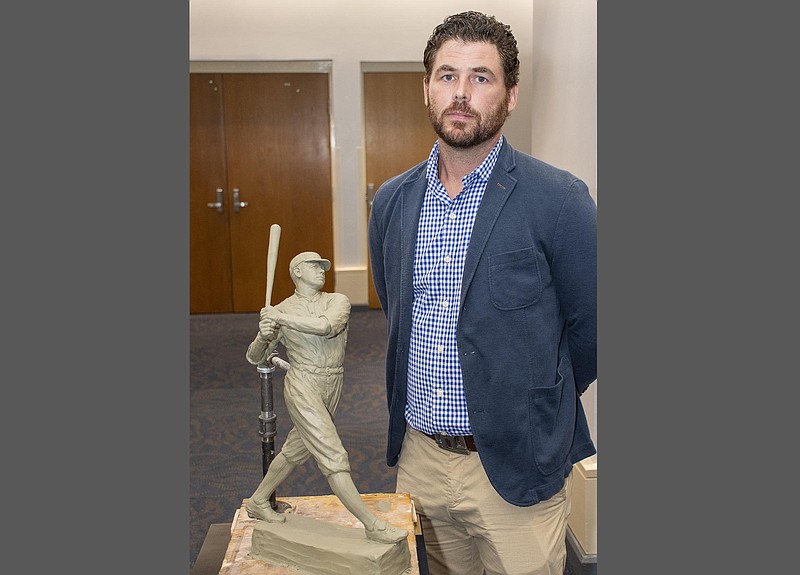HOT SPRINGS -- Babe Ruth will stand tall in Hot Springs once again with the unveiling of an 8-foot statue of the Bambino on his 128th birthday at the entrance to Majestic Park.
The world's third bronze statue of Ruth will be revealed in a ceremony at the park at 10:30 a.m. on Feb. 6. The sculpture is being created by Chad Fisher of Fisher Sculpture based in Pennsylvania.
The Majestic Park group, led by Steve Arrison, the chief executive officer of the tourism agency Visit Hot Springs, and his colleague, Cultural Affairs Manager Mary Zunick, "connected with us, and that was during covid," said Fran Fisher, one of the owners of Fisher Sculpture. "So it was a particularly bizarre time to be doing business, especially since we count on deep personal relationships with our committees, client base, families. It's one of our points of difference in doing this type of work, and we're also extremely selective about what we do."
Fisher said the first step of the process was researching photos.
"You're not only trying to capture the accuracy of buttons in uniform, but you want to reflect the personality, which is really hard to do," he said, noting in some instances there are thousands of photos to sort through.
"It's incredibly difficult. How do you reflect personality in clay or bronze? It has to do with pose, expression, body language, congruency, and overall compositional elements."
An important part of the research includes finding "bad" photos of the subject, as well.
"We do want the bad photos, too -- the back of the head, because if we don't have the back of the head or the back of the body, you can't be accurate," he said. "So we always ask for the bad pictures -- the bad picnic pictures, we call them.
"So the pictures where that person is not the focal point, or maybe one of Babe Ruth's teammates was being interviewed, and he's in the background turned around not even facing the camera. That's a very useful photo for us to help create the likeness."
Following the research, a miniature clay sculpture is made to determine the basic look of the sculpture.
"They are the sketch -- without the buttons and shoelaces -- but they're a sketch of what the pose will look like," Fisher said. "That would be under our control, and what we try to do is make sure that it appeals to everything that the committee wants, but we add the artistic elements that make it a good composition and we'll make an effective sculpture."
Fran Fisher said when creating this statue, Chad Fisher created a portrait study for the committee to make sure the likeness was correct.
"This was a way of vetting out whether he had it right or not. We were actually producing Babe a little too young and a little too thin. The first attempt portrait looked exactly like Babe when he was in his very, very early days, but it wasn't as easily recognizable by the general public.
"So the advice of the committee was to fatten him up a little bit and make him the Babe that everyone recognizes. So Chad made them a little thicker without denigrating the sculpture and making it unappealing. It's still very appealing, but he's a little bit thicker, and he looks like Babe Ruth, which is the goal."
While many sculptors may use technology to create their bronze statues, Fisher Sculpture maintains the ancient techniques of working with bronze.
"We do it exactly the way it was done 500 years ago, and the way it was done 500 years ago, was borrowed from the way it was done around 2,500 years ago," Fisher said.
"So historically, the Greeks, the Romans and the Egyptians, particularly the Greeks, perfected sculpture. They were able to quantify some certain very complex calculations on congruency and harmony."
Fisher said math is a key component to making sure everything is done correctly since the process requires the scaling up of the miniature.
"When you look at something that's done by either Fisher Sculpture or someone else that you like, and if you say, 'That's right; it works,' that's because it works harmonically, and it appeals to all of our natural senses," he said.
"The harmony in nature, the Fibonacci [sequence], the whirling rectangles, the root rectangles -- all of these design elements layered on top of one another are concentrated in this piece at all viewing angles."
